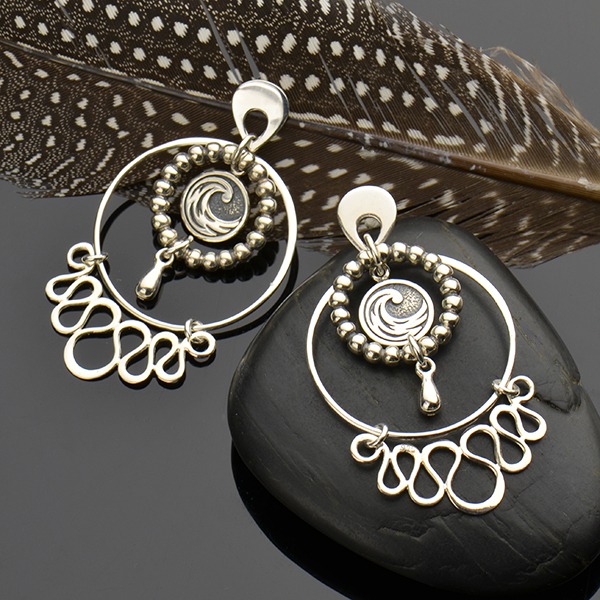How to Clean Silver Charms and Pendants
By Leah
We receive many calls from customers asking how to clean silver pendants, charms, and earring findings without harming them. With silver becoming more and more precious with every day, taking good care of it is very important. All sterling silver will tarnish when exposed to air. The process is called oxidation, and it will cause sterling silver to blacken and darken over time. Read, Preventing Tarnish on Sterling Silver, that’s packed full of helpful tips & tricks to prevent tarnishing in the first place.
If it’s a little too late, and your sterling silver has tarnished and now needs to be cleaned, start here:

Be gentle with cleaning you don't want to remove all the oxidation!
1. Before you start cleaning jewelry always do a quick visual check to see if there are any loose or damaged gemstones; cracked or broken metal; bent or warped prongs/tips; discolored or pitting metal. If this is the case, we recommend having it professionally cleaned and repaired. You wouldn’t want to cause any further damage.
2. Always remove jewelry before showering or cleaning. A film can form if the soap is not washed off completely. This film will become a magnet for dirt, dust and other contaminants.
3. Use a silver polishing cloth to remove oxidation from silver. Tissues and paper towels can cause scratches. We recommend using a Sunshine Cloth. Be sure to use fresh cloths since the dirt and grit left on the cloth from a previous use can leave scrapes and pits. Use light pressure and allow the cloth to do the work for you. If your arm starts to ache, you’re probably pressing too hard.
4. Commercial cleaners can be purchased at jewelry stores. Always remember to read the instructions on the commercial cleaners first before you attempt cleaning. Most commercial cleaners are very strong and will remove all oxidation! Many of our designs are purposely oxidized then polished, so that crevices are darkened to bring out the depth and beauty of a piece.Take care not to remove this design element. Do not go overboard!
5. If you’d like to avoid harsh commercial cleaners and the polishing cloth doesn’t work, wash silver jewelry (without gemstones or pearls) in warm water containing a few drops of mild dishwashing liquid. Immerse the sterling silver in the water and gently hand wash. Use a cotton swab for tight corners. A soft baby toothbrush can be used for more abrasive cleaning when needed. Thoroughly rinse and completely dry the sterling silver before storing, as moisture is one of the factors that contribute to tarnishing!
6. If the jewelry contains gemstones or pearls, do not submerge the entire piece into water. Instead, use a cotton swab with mild dishwashing liquid to wash only the silver. Again, thoroughly rinse and completely dry the sterling silver before storing, as moisture is one of the factors that contribute to tarnishing!
7. Never clean your jewelry in bleach! Doing this will literally breakdown your jewelry. Bleach is an oxidizing agent that will react to the metal, causing it to become very brittle. Remember to remove your jewelry before swimming or soaking in a hot tub too!
8. Besides chlorine bleach, denatured alcohol, turpentine, acetone, and ammonia are harmful too. These chemicals can dull or even pit the surface on softer gemstones, like amber, turquoise, lapis, and more.
9. Never use toothpaste or other abrasives to clean metal or stones. Some websites recommend toothpaste as a cleaner, but this is not an accepted practice by fine jewelers. The abrasives in toothpaste can damage the surface of the metal. Toothpaste will also abrade the surface on amber, lapis, turquoise and other soft stones.
By following these simple tips, you’ll be able to keep your precious jewelry clean and in tip top condition. Take care of your silver jewelry and you will get to enjoy them for many years to come.
